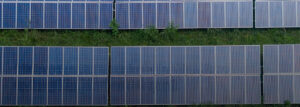Do you remember a time when life seemed a lot more straightforward? That went for packaging, too. Back in the 1950s and 1960s, powered by the
Keep America Beautiful campaign, our priority was to eliminate roadside litter. And then, as the years progressed, recycling emerged as the overarching goal. The use of recyclable materials became the commonly accepted aspiration for consumer packaging designers in the 1970s and beyond. Then as now, however, the relationship between the potential recyclability of packaging and actual recycling rates remains tenuous. Today, we are obliged to use a wider lens to look at the environmental issues surrounding packaging. Decision-makers must navigate many challenges, such as solid waste, global warming, ocean pollution, water conservation, and deforestation, and consider their company’s environmental scorecard when making their packaging selection for their product. Let’s take a closer look.
Solid Waste
Packaging solid waste remains an enduring problem. In spite of our best efforts, trash generation is still on the rise. The world’s garbage output is expected to increase by 70% by 2050 on the heels of a rapidly growing world population and urbanization. Americans generate 14% of global solid waste, though we have only 4% of its people. Per capita,
solid waste generation continues to creep upward (4.51 pounds per person per day in 2017, up from 4.48 in 2015). And about 30% of U.S. garbage is
packaging waste.
Global Warming
Another fundamental consideration of sustainable packaging design is that of global warming and energy costs. The most energy-intensive component of packaging is typically producing the packaging material itself. The lighter the package, the lower the global warming impact.
Recycled material can make a difference, however. It often requires less energy to use it than to use virgin material, so an increased percentage of recycled content helps to reduce the global warming impact of packaging. At the same time, the demand for recycled material can help to stimulate recycling markets and drive higher recycling rates. Likewise, the use of renewable materials such as fiber-based products or bioplastics is preferable, since doing so generates significantly less carbon dioxide.
An emphasis on carbon dioxide reduction has led to the “lightweighting” trend, which has resulted in new packaging technologies. Our recycling capabilities have not kept pace with packaging innovation, though. The result is the generation of more and more multilayer plastic packaging that cannot be recycled. Likewise, lightweight packaging that hasn’t been designed from a holistic or supply chain perspective has led to higher product damage rates, operational inefficiencies, and lost sales.
Ocean Pollution
Plastic that makes its way into the ocean comes at a considerable cost. According to a May 2019
study published in the Marine Pollution Bulletin, plastic pollution in oceans costs society as much as $2.5 trillion every year in lost marine ecosystem value. People are increasingly mindful of the ocean plastic situation. According to other research, 65% of Americans said they were very concerned or extremely concerned about
plastics in the ocean, compared to 58% who felt very or extremely concerned about climate change. Public outrage about ocean plastic has been a key driver in the backlash against plastic packaging. It has also motivated companies to explore options to eliminate single-use plastic.
Water Conservation, Deforestation Considerations, and More
Other environmental impacts related to packaging production include eutrophication (for instance, algae blooms on bodies of water), smog creation, water usage, acidification (acid rain), and deforestation. The good news is that packaging producers continue to make inroads in reducing their environmental impact.
Fiber usage is often assumed to be associated with deforestation, but the evidence is to the contrary. In fact,
global tree cover in the U.S. increased by 15% between 1982 and 2016, while it expanded by 34% in Europe over the same time period. Molded fiber packaging relies on sources such as renewable crops and recycled fiber which do not impact deforestation.
Customer Response to Environmental Concerns
Several leading companies have made commitments to make their plastic packaging
100% recyclable, reusable, or compostable by 2025. Companies are actively shifting from multilayer to monolayer plastic packaging to promote recyclability. Many manufacturers are also looking at alternatives to plastic packaging. For example,
Apple has moved to 100% responsibly sourced wood fiber in all of its retail packaging.
When it comes to packaging selection, the question of which packaging is the most environmentally friendly has become complex. With escalating concern about ocean plastic and low plastic recycling rates, companies are now leaning toward recyclable packaging, recycled content, and non-plastic options.
The good news is also that proactive packaging companies are now taking the lead in developing eco-friendly alternative solutions to plastic. For example, premium appearance molded fiber packaging solutions have been developed for the cosmetics and pharmaceutical industries that feature custom shapes and with a variety of surface finishes and branding options.
Take a moment to reflect on the environmental scorecard for your current packaging solution, and how it may be resonating with your customers. Recyclable and compostable fiber products are increasingly available to replace plastic in a wide range of applications.











